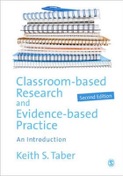Educational Research Methods

A site to support teaching and learning...

Achieving ethnic minority students' inclusion...
These short extracts from published research papers are provided to support class discussion.
Zanoni, P., & Mampaey, J. (2011). Achieving ethnic minority students' inclusion: a Flemish school's discursive practices countering the quasi-market pressure to exclude. British Educational Research Journal, 1-21. doi: 10.1080/01411926.2011.620602
http://www.tandfonline.com/doi/full/10.1080/01411926.2011.620602
Abstract
The purpose of this paper is to identify how ethnically diverse schools can discursively maintain a good reputation. Reputation allows attracting the mixed student population necessary to achieve inclusion or closing the gap between the attainment of ethnic majority and minority students. In semi-market educational systems where students are free to attend the school of their choice yet education has no market price, the share of ethnic minority students functions as one of the main indicators of a school’s educational quality. Ethnically diverse schools are thus perceived as offering lower quality education. Based on the case of a highly ethnically diverse, inclusive secondary school in the exclusive Flemish secondary educational semi-market, we found that a positive reputation could be achieved through three related discursive practices: affirming the high-quality education of the school, redefining the relation between students’ ethnic diversity and educational quality and reconstructing ethnic diversity as an educational resource.
About the case
“The study is based on the empirical case of an inclusive secondary school in Flanders (Belgium), which has succeeded in minimising the attainment gap between ethnic majority and minority students in preparatory tracks while maintaining a strong reputation. A Flemish case study is particularly suitable to our purpose as the Flemish quasi-market educational system is one of the most exclusive in Europe (Hirtt et al., 2007). Within such an exclusive environment, a successful inclusive school represents an ‘extreme case’ suitable to observe the phenomenon under investigation in a highly transparent way (cf. Eisenhardt, 1989)…
This study examines how an inclusive school successfully manages the contradiction between its inclusive mission and the exclusionary pressure from the educational system…
The school under study has both majority and minority students in all six years of secondary preparatory tracks giving access to higher education. The presence of ethnic minority students in the last years of preparatory tracks is exceptional in Flanders, where 70% of minority students in their fourth year of secondary education are in vocational tracks compared to 20% of majority students (Hirtt et al., 2007).”
From the Methodology
“To address our research question, we opted for a single-case research design. As we are interested in learning how an inclusive school is able to manage the contradiction between its own inclusive mission and the pressure to exclude minority students, we theoretically sampled (Guba, 1981) the ‘extreme’ case (Eisenhardt, 1989) of a school that has successfully reduced the attainment gap between majority and minority students in preparatory tracks and that is embedded in a highly exclusive, quasi-market educational system such as the Flemish one.
We identified the school through a non-profit umbrella organisation working on equal opportunities in education, which indicated it as possibly matching our selection criteria.
Our main data sources were 13 semi-structured interviews with multiple actors including the principal, one coordinator, four teachers, one administrative staff member, four minority students (with Moroccan, Bangladeshi and Pakistani backgrounds), one majority parent and one minority parent (with a Moroccan background). … Interviews with actors in various positions within the school enabled us to capture the school practices from the respondents’ own, multiple perspectives (Lee, 1999). …
We complemented the interview data with relevant internal and external documentation including: the evolution of the student population in the period 2004–2005 to 2008–2009 in terms of Belgian/non-Belgian nationality, the pass rates of Belgian and non-Belgian students for the school year 2008–2009, the school’s mission statement (1), the school’s website (1), articles on the school’s practices and exceptional minority students’ attainments in the Flemish press (8) and brochures (2). Thanks to multiple data sources, we were able to triangulate the information collected through the interviews, enhancing its reliability (Yin, 2009).
…
During the data analysis, we first reconstructed the case from all data sources focusing on the school’s practices enhancing (minority) students’ educational attainment. In a second phase, we searched the texts for references to the external pressure to exclude minority students. Finally, we conducted a discourse analysis of the strategies mentioned by respondents to counter such pressure, identifying three discursive practices: affirming the high-quality education of the school, redefining the relation between students’ ethnic diversity and educational quality and reconstructing students’ ethnic diversity as an educational opportunity. Whenever we interpreted the data differently, we went back to the original text and discussed it till consensus was reached.”
(Brief extracts such as these can only give you a flavour of a study. You can use the citations to access the full papers to explore the extracts here in the contexts of the full studies.)
This is a personal site of Keith S. Taber to support teaching of educational research methods.
(Dr Keith Taber is Professor of Science Education at the University of Cambridge.)
2016
